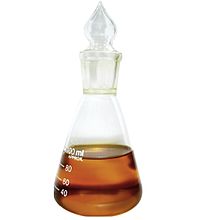
Photo from wikipedia
Abstract Hydrothermal carbonization (HTC) is emerged as a potential technology to convert wet biowastes into clean solid fuels with significant advantages, which means that the insight into the relationships between… Click to show full abstract
Abstract Hydrothermal carbonization (HTC) is emerged as a potential technology to convert wet biowastes into clean solid fuels with significant advantages, which means that the insight into the relationships between HTC pretreatment and subsequent thermochemical utilizations is of important. In this study, industrial biowastes, including lignocellulosic, non-lignocellulosic and ash-rich types, were selected for HTC experiment under different temperatures. Except for the fuel properties of hydrochar, the evolution in carbonaceous structures was analyzed and compared to that of coals with different ranks (i.e., lignite, bitumite and anthracite); furthermore, these changes were used to establish a correlation with the reactivity of pyrolysis and gasification processes. The results found HTC not only upgraded the fuel quality of feedstock but could also develop their aromatic structures, although each biowaste contained different components. Such improvement simulated the development of coals from low to high ranks because the carbonaceous structure in hydrochars was gradually changed to that of bitumite or even anthracite when HTC temperature increased from 120 °C to 300 °C. TG analysis demonstrated that both of the pyrolysis and gasification reactivity of hydrochar were in a generally negative correlation with HTC temperatures, but the extent and the specific relationship differentiated from each other due to the various components in biowaste. These findings are believed to contribute an essential part in bridging the gap from a theoretical potential energy source to the sustainable development of an alternative renewable fuel.
Journal Title: Energy Conversion and Management
Year Published: 2019
Link to full text (if available)
Share on Social Media: Sign Up to like & get
recommendations!